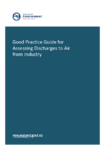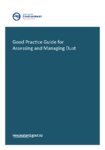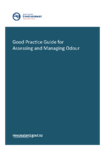Our Natural Resources Plan (NRP) contains rules relating to air discharges. Rule 1 to Rule 42 cover discharges to air in the Wellington region, including:
- Outdoor burning
- Domestic fires
- Large scale combustion activities
- Chemical and metallurgical processes
- Cremation and incineration
- Dust generating activities
- Food, animal or plant matter manufacturing and processing
- Fuel storage
- Mobile sources
- Gas, water and wastewater processes
- Drying and heating of minerals
- Discharge of agrichemicals
- Fumigation
Proposed Plan Change 1
(PDF 53 MB)
includes changes and additions to air discharge rules which have have immediate legal effect. We recommend that you contact us at notifications@gw.govt.nz to discuss how any updated air discharge rules may affect your activity.
If your activity does not comply with the permitted rules in the Natural Resources Plan, you will require a resource consent for air discharge. As part of your resource consent application and Assessment of Environmental Effects, the following may be required to included:
- Dispersion modelling of proposed emissions. Dispersion modelling is used to predict the spatial extent and magnitude or ground level concentrations of air pollutants due to the discharge of emissions from an industrial process.
- Analysis of meteorological data. Meteorological data is a component of dispersion modelling. GWRC holds meteorological datasets for nine domains in the Wellington region. Datasets are CALMET files, which are suitable for CALFPUFF dispersion modelling. If you need to obtain meteorological datasets, please contact us at notifications@gw.govt.nz.
- An assessment of health effects. Air discharges may have a range of negative health effects on the community. We recommend any discharges of contaminants are assesses against appropriate regulatory documents, such as National Environmental Standard for Air Quality and Regional Ambient Air Quality Targets, or World Health Organisation guidelines.
The Good Practice Guide for Assessing Discharges to Air from Industry provides helpful assistance when preparing a resource consent application.
For further assistance, or to set up a pre-application meeting, call 0800 493 734. You can also access forms at our forms and information requirements webpage.



